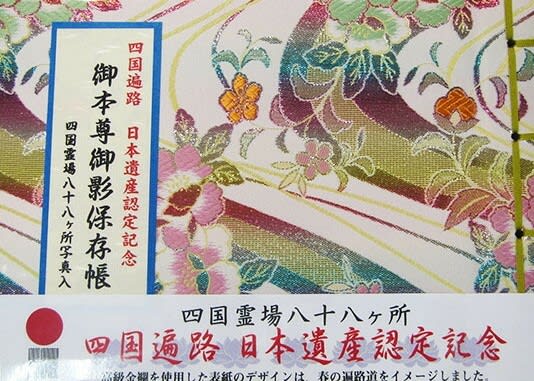前回の「尾道・文化紀行」で「尾道水道が紡いだ中世からの箱庭的都市尾道は日本遺産」という内容を紹介した。
尾道が日本遺産に認定されていることを最近まで知らなかった。
というよりは、日本遺産ついての知識がないのに等しいものであった。
In the previous "Onomichi / Cultural Journey", I introduced the content that "Onomichi, a medieval city spun by Onomichi Suido, is a Japanese heritage site." Until recently, I didn't know that Onomichi was designated as a Japanese heritage site. Rather, it was equivalent to having no knowledge of Japan Heritage.
ということで、遅ればせながら「日本遺産」について少し調べてみた。
日本遺産は文化庁の管轄で、地域に受け継がれている有形・無形のあらゆる文化財群を対象に
価値付けや保護を目的に平成27年4月に制定された。
その第一号として、「国境の島 壱岐・対馬・五島~古代からの架け橋~」というストーリーで
認定されたのが長崎県壱岐島である。
尾道は、というと2017年に「尾道水道が紡いだ中世からの箱庭的都市」として認定され、
現在では全国108カ所が日本遺産に登録されている。
So, I did a little research on "Japan Heritage", though I was late. Japan Heritage is under the jurisdiction of the Agency for Cultural Affairs, and was established in April 2015 for the purpose of valuing and protecting all tangible and intangible cultural properties inherited in the region. As the first of these, Iki Island, Nagasaki Prefecture was certified in the story of "Iki, Tsushima, Goto, the border islands-a bridge from ancient times". Onomichi was certified as a "box garden city from the Middle Ages spun by Onomichi Suido" in 2017, and 108 places nationwide are currently registered as Japan Heritage.

認定されるもっとも大きな理由としては、文化庁のホームページによると、
「日本遺産(Japan Heritage)」は地域の歴史的魅力や特色を通じて
我が国の文化・伝統を語るストーリーを「日本遺産」として認定するものと記されている。
認定される最大の要因としては、その地域を語るうえで欠かせないポイント、
つまり魅力溢れる有形・無形の様々な文化遺産に相応しいストーリーが不可欠のようだ。
そしてその様々な文化財群を、地域が主体となって総合的に整備・活用し、
国内だけでなく海外へも戦略的に発信していくことにより、地域の活性化を図ることが目的と記されてあった。
According to the website of the Agency for Cultural Affairs, "Japan Heritage" certifies stories that tell the culture and traditions of Japan through the historical charm and characteristics of the region as "Japan Heritage". It is written that. The biggest factor to be recognized is that it is indispensable to talk about the area, that is, a story suitable for various attractive tangible and intangible cultural heritage. The purpose is to revitalize the region by comprehensively developing and utilizing the various cultural property groups mainly by the region and strategically disseminating them not only in Japan but also overseas. It was written.
日本遺産は、世界遺産の日本版のように思われるが少々違うようだ。
その違いというのは、世界遺産登録や文化財指定は、
いずれも登録・指定される文化財(文化遺産)の価値付けを行い、保護を担保することが目的である。
一方、日本遺産は地域に点在する遺産を「面」として活用し、
地域活性化を図ることを目的としている点が違うようだ。
認定にあたっては、その地域(面)の歴史文化的ストーリーが認定の大きなカギになる。
そのストーリーは次の事項を踏まえた内容と定義されている。
・地域の風土に根ざし世代を超えて受け継がれている伝承、風習等を踏まえたストーリー
・そのストーリーの核になるのが、地域の魅力として発信する明確なテーマを設定の上、
建造物や遺跡・名勝地、祭りなど地域に根ざして継承・保存がされている文化財にまつわるものが据えられていること。
・単に地域の歴史や文化財の価値を解説するだけのものになってないこと
などが認定の大前提のようである。
Japan Heritage seems to be the Japanese version of World Heritage, but it seems a little different. The difference is that both World Heritage registration and cultural property designation are aimed at valuing the registered and designated cultural properties (cultural heritage) and ensuring protection. On the other hand, Japan Heritage seems to be different in that it aims to revitalize the region by utilizing the heritage scattered in the region as a "face". For certification, the historical and cultural story of the area (face) is the key to certification. The story is defined as the content based on the following matters.
・A story based on traditions and customs that are rooted in the local climate and have been passed down from generation to generation.
・The core of the story is the cultural assets that are inherited and preserved rooted in the region, such as buildings, archaeological sites, scenic spots, and festivals, with a clear theme to be transmitted as the charm of the region. Being installed.
・It is not just an explanation of the history of the region and the value of cultural properties. Etc. seems to be a major premise of certification.

日本遺産に認定されることで、対外的にはその地域が「日本遺産」というブランドとして価値付けに大きく貢献する。
それにより外へ向けての発信力が強くなるのは言うまでもない。
なによりも大きいのが、地域のコンセプトストーリーが明確になり、
その地域内の人々の意識向上に間違いなくつながっていく。
ただ、まだ「日本遺産」がハイクオリティとしてのブランドとして定着しているようには思えない。
歴史文化の宝庫である日本の文化遺産を国内で次世代を担う子供たちに広げていくことが、
何よりも肝要なことのように思えてならない。
By being certified as a Japan Heritage, the area will contribute significantly to the value of the brand as "Japan Heritage" externally. Needless to say, this will strengthen the ability to transmit to the outside. The biggest thing is that the concept story of the area will be clarified, which will definitely lead to raising the awareness of the people in the area.
However, it does not seem that "Japan Heritage" has been established as a brand as high quality. Expanding Japan's cultural heritage, which is a treasure trove of historical culture, to children who will lead the next generation in Japan must seem to be the most important thing.
リポート/ 渡邉雄二 写真 / 栗山主税・渡邉雄二 Reported by Yuji Watanabe Photo by Chikara Kuriyama


















※コメント投稿者のブログIDはブログ作成者のみに通知されます